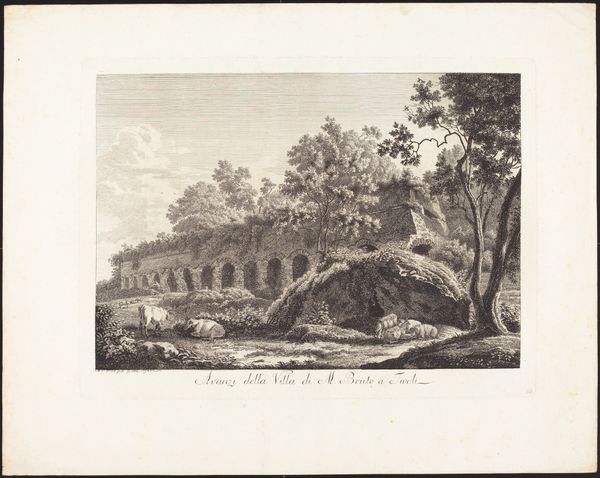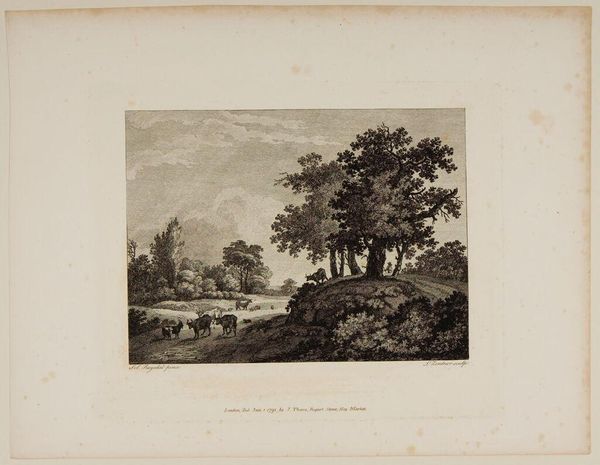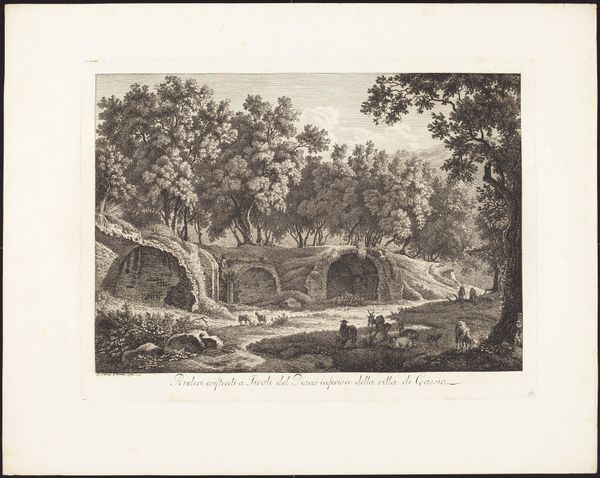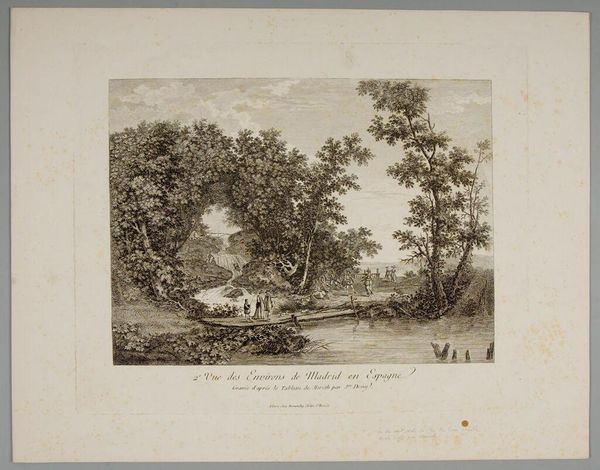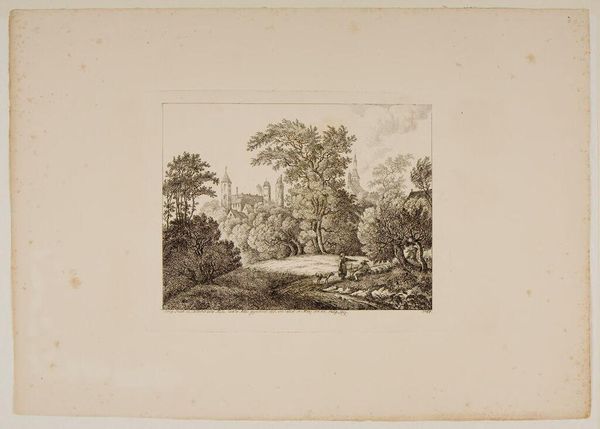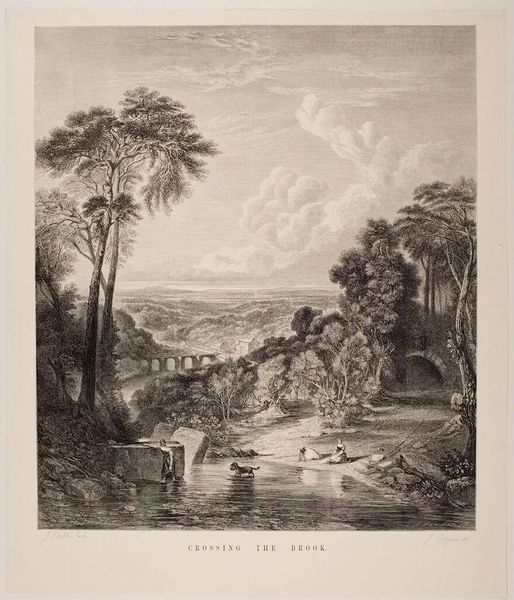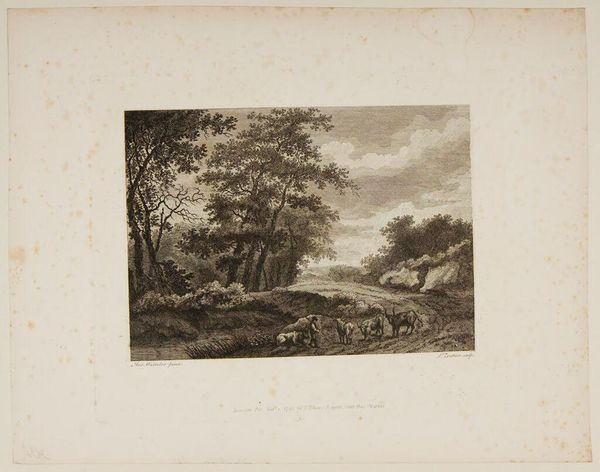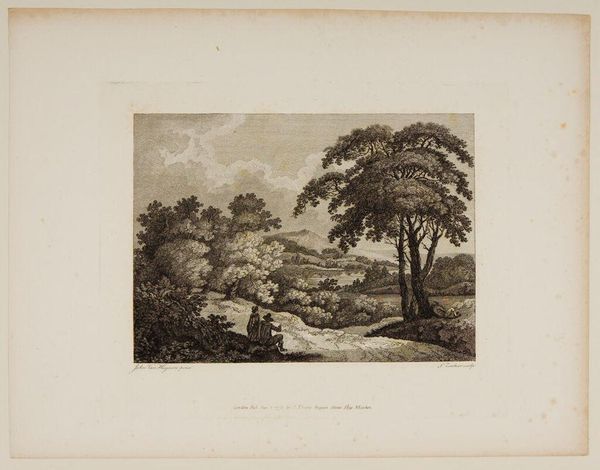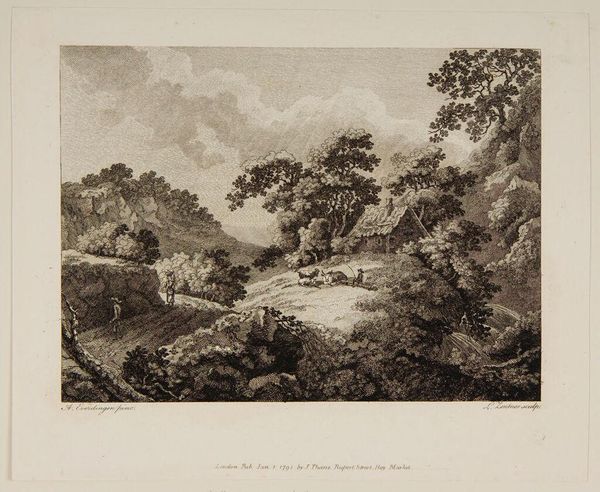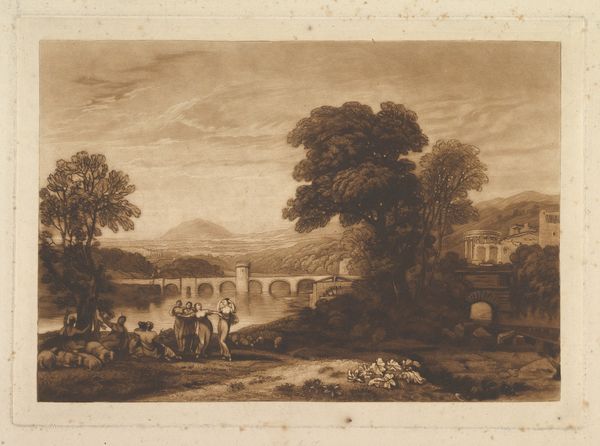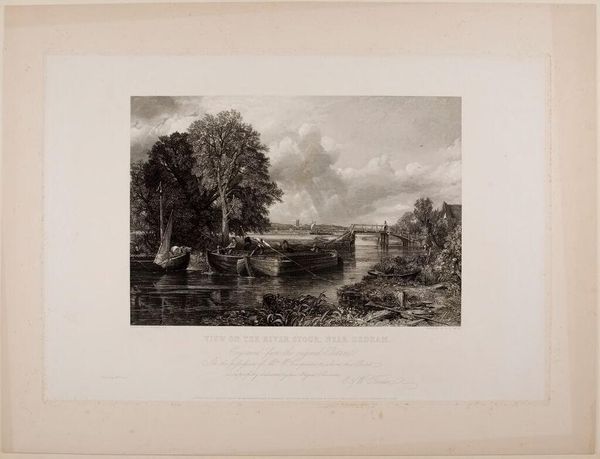
Copyright: CC0 1.0
Editor: This print, "Ruins of the Villa of Marcus Brutus at Tivoli" by Albert Christoph Dies, has such a serene, almost melancholic mood. The ruins seem to blend into the landscape. What do you see in this piece, especially considering its historical context? Curator: This etching speaks volumes about the 18th-century fascination with antiquity and its relationship to the present. The villa, once a symbol of power, is now picturesque ruins. How do you think the artist uses the imagery of ruins to comment on the fleeting nature of power and empire? Editor: It's interesting that the artist chose to depict the ruins overgrown with nature. It's like a statement about nature reclaiming what was once built. Curator: Precisely. And this image was created during a time when the concept of the "sublime" was in vogue. The sublime is the feeling of awe mixed with terror when contemplating the vastness of nature or the remnants of great civilizations. This etching taps into that sensibility. Editor: That makes sense. I see now how the artist positions these ruins not just as historical remnants but as statements about the enduring power of nature. Thank you for elaborating on that point. Curator: My pleasure. It's a reminder that art always exists within a broader socio-political framework.
Comments
No comments
Be the first to comment and join the conversation on the ultimate creative platform.
